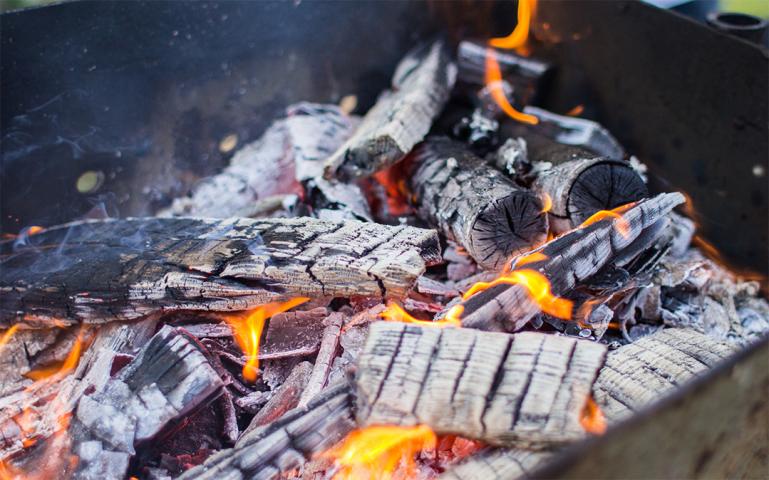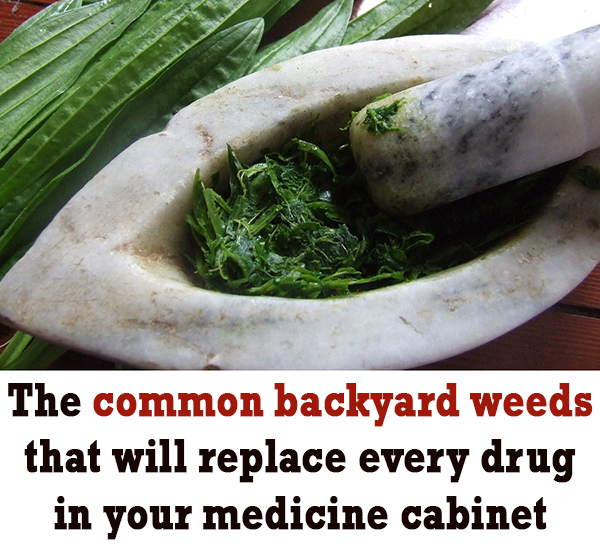Using wood ashes as a cleaning agent makes a lot of sense: they are readily available, free, and relatively safe for the environment when compared to many types of soap. In this Survival Topic we will cover this very handy method for the outdoors man to clean his dirty dishes.

Re-purpose Natural Materials
When it comes to wilderness survival, large scale disaster, or even just camping outdoors we often try to do things in the same manner as we are accustomed to doing them at home. However what works well enough in civilization does not necessarily translate smoothly to a wilderness or disaster scenario where familiar supplies of every sort are limited or non-existent.
Solutions are available to most outdoor and survival problems, if only we have the knowledge and inventiveness to use them. But because we usually spend most of our time in civilization where specialized tools and products are readily available, we loose some of the edge in our abilities to utilize the common items we find around us in the wilderness.
Often it is simply a matter of key pieces of information missing in our expertise, which once provided suddenly gives us a powerful new way to accomplish necessary tasks. Survival Topics maintains that the best survivalists are experts at re-purposing what is available to them under field conditions.
Consider the daily chore of cleaning your mess kit after a meal. There can be no doubt that the proper cleaning of your mess kit and cooking gear is an important wilderness or disaster survival task; when it comes to the food you eat and the cooking gear and utensils that come in contact with it, a lack of proper hygiene can lay you low in short order.
Easy Access to Soap is Limited
In a disaster or wilderness survival setting you will often lack soap with which to wash your camp cooking gear and mess kit.
Soap takes up weight and space, which is a very important consideration when every ounce and every cubic inch of your gear must be measured against what is most important for your survival. Especially when you are on foot the less you carry the better off you are; hard decisions must be made on what you bring with you and what is left behind.
On extended stays in the wilderness or during a large scale disaster re-supply from outside sources is usually not available. You are likely to eventually run out of any soap you have so an alternative means for cleaning your cooking gear and mess kit is preferable.
When practicing survival skills in the field I usually do not bring soap to clean my mess kit and cooking gear. To save on bulk and weight, I would forgo using any soap I had in favor of rubbing and swirling a mixture of water, mud and sand on cooking utensils in order to scour off caked on grease and food particles. Although sanding down cooking gear certainly removes food residues, it often doesn’t eliminate all the grease. And the mess kit and cooking gear sure take a beating.
For many years I was content on using the sand and mud method to clean my cooking gear when in the wilderness. But one evening while sitting around the camp fire after having washed the remains of the evening meal from my mess kit with the usual mud, sand, and water mixture, the smoke sudden cleared from my eyes and the world seemed fresh and new. I had independently made a discovery that had already been known for centuries.
Use Wood Ashes to Clean Dishes
With a flash of insight I realized all the soap for washing my mess kit has always been right at hand. What’s more, the supply is inexhaustible and I do not have to carry it.
The answer to all my mess kit and cooking gear cleaning problems? Wood ashes. Back home I did the necessary research and discovered that cleaning dishes with wood ashes is a sound practice.
Wood ashes have been used for centuries as a source of lye in the soap making process. When lye derived from wood ashes is mixed with fats or oils a chemical action takes place that produces what we call soap. While the chemistry behind this process is beyond the scope of this Survival Topic, its implications are not; if you have wood ashes (from a campfire) and fats or oils (in your dirty dishes) then you’ve got soap!
How to Use Wood Ashes as Soap
Before we even begin to describe in detail how to use wood ashes as soap in the wilderness, I want to emphasize the importance of washing your cooking gear far away from any water supply. Do not pollute the water sources that you, other people, and wildlife rely upon for survival.
Follow these basic steps for cleaning your cooking gear with wood ashes. As with most processes, the description is wordy but actually doing it is easy:
- Before you start cleaning your cooking gear with wood ashes there are some important considerations that should be addressed:
- The wood ashes used to wash your gear must not contain residue from plastic, food, or other trash that was burned in the fire; these substances could very well be toxic. To obtain pure wood ashes be sure you do not use ashes in which others may have burned items other than wood. You may have to build a fire at a fresh location from which to obtain pure wood ash.
- Water is a precious resource that is easily contaminated. Avoid being the cause of water contamination – do not wash anything within 200 feet of streams, lakes or ponds, springs, etc.
- Water for washing anything that will come in contact with food must be first treated to destroy disease causing organisms.
- The lye from wood ashes can make your hands dry if left on for a period of time. Be sure to use gloves or rinse your hands in clean water after scrubbing your gear using this method.
- Do not use wood ashes to wash your body or any gear that cannot withstand harsh soaps.
- Ashes from hardwood trees are better for making wood ash “soap” than ashes derived from softwoods. In general, softwood trees have needles as leaves and do not shed them in winter. Hardwoods have broad flat leaves and in cooler climates often shed their leaves before winter sets in.
- Let your fire burn down to the point where you can easily extract wood ashes.
- Select the greasiest pot you want to clean. If the food residue is not very greasy you can help the soap making process by adding a small amount of fat or oil into the pot. Butter, margarine, olive oil, animal fat, etc are all good. Just a few drops are enough.
- Add a few cups of ashes into the pot. If there are bits of charcoal mixed in with the wood ash that is even better since charcoal will aid in scouring. Often I carefully add a few hot coals from the fire in order make hot water (see the next step).
- Add enough hot water to the wood ashes in the pot to make a paste. Because you are cleaning gear that will be touching food, you must make sure this water is free of disease causing organisms as stated in step one. You can either first boil this water to make it safe, or first add some hot coals to the pot as mentioned in step #5 above. These hot coals should bring the water up to a high temperature that destroys any organisms in the water.
- The hot water will create potassium salts from the wood ashes, which will then mix with the fats or oils in the food residue. This forms a crude soap that will cut through the crud and grease on your cooking gear.
- When the water and wood ash paste is cool enough smear it all over your cooking gear and let it set for several minutes. This is where the chemical reaction takes place that makes your wood ash soap.
- Scrub clean your cooking gear and mess kit.
- Rinse with treated water.
Of course being able to use wood ash soap means you must have access to a wood fire. In some areas open fires are not allowed or you may choose to use fuels other than wood for cooking food or heating purposes.
Recently re-discovered plant works as a natural health remedy for pain and inflammation
Cook with Wood and Save
I am a big fan of using supplies provided by nature’s survival supply depot rather than have to carry them myself. This saves on problems of procurement, expense, weight, and bulk; always welcome attributes when traveling in the wilderness.
Since in my area wood is always available and open fires are not restricted, I do my camp cooking on a hobo wood burning stove. The advantages of using a wood burning stove over stoves using other types of fuels include:
- Do not have to purchase fuel.
- Do not have to carry fuel.
- The fuel supply will never run out – bits of wood or other natural burnable materials can easily be obtained anywhere I go.
- The fuel wood is burned into ash during the cooking of meals. The ash is then used to wash the dishes so I never need to carry soap for this purpose!
So there you have it – cook with wood and get all the free fuel and all the free soap you need to for cleaning cooking gear. A sound wilderness survival skill you can easily use the next time you cook a meal in the great outdoors.
By John M.
Self-sufficiency and Preparedness solutions recommended for you:
Food for Freedom (If I want my family to survive, I need my own food reserve)
Liberty Generator (How to gain complete energy independence)
Backyard Liberty (Obama’s hidden agenda: more than just your guns…)
Alive After the Fall (Build yourself the only unlimited water source you’ll ever need)


